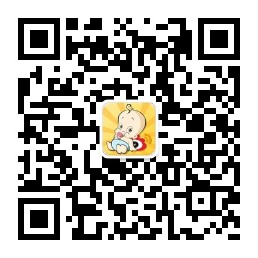Poliomyelitis is an acute infectious disease caused by poliomyelitis virus, also known as poliomyelitis. Because many people do not understand the symptoms of poliomyelitis in their lives, it is easy for parents to ignore poliomyelitis after children have related symptoms. What are the clinical manifestations of poliomyelitis?
Clinically, poliomyelitis can be divided into the following three types according to the clinical symptoms of children:
light
Mild poliomyelitis is the main type, accounting for 80%~90% of clinical infections, and is mainly found in children. The clinical manifestation is mild, and the central nervous system is not invaded. Mild fever, discomfort, headache, sore throat, vomiting, diarrhea, constipation and other symptoms occur 3 to 5 days after exposure to the pathogen, and generally recover within 24 to 72 hours. There are also flu like symptoms, joint and muscle aches and pains. The symptoms lasted for 1-3 days and recovered spontaneously.
heavy
Severe poliomyelitis usually comes on suddenly a few days after mild poliomyelitis. Before onset, patients often have no prodromal symptoms, and tend to occur in older children and adults. The incubation period is generally 7-14 days, sometimes longer. After onset, fever, severe headache, stiff neck and back, deep muscle pain, sometimes hypersensitivity and sensory abnormalities, urinary retention and muscle spasm occur in the acute phase, and deep tendon reflex disappears, which may not further progress, but it may also occur that deep tendon reflex disappears, asymmetric muscle weakness or paralysis, which mainly depends on the location of spinal cord or medulla oblongata damage. Respiratory weakness may be caused by paralysis of respiratory muscles due to involvement of spinal cord, or it may be caused by virus injury of respiratory center itself. Dysphagia, nasal reflux and nasal sounds are early signs of medulla oblongata invasion. The signs of encephalopathy are occasionally prominent.
other
In addition, there is also an asymptomatic recessive infected person who has no symptoms after being infected with the virus. The virus reproduction only stays in the digestive tract, does not produce viremia, and does not infiltrate the central nervous system. However, the virus can be isolated from the pharynx and feces, and specific neutralizing antibodies can be found in the body.
After the child suffers from poliomyelitis, the following inspection items are required:
Cerebral effusion examination: most children with poliomyelitis have abnormalities before paralysis. The appearance of hydrocephalus is slightly turbid, the pressure is slightly increased, and the number of cells is slightly increased (25~500/mm3). In the early stage, neutrophils are the majority, and then monocytes are the majority. After the heat subsides, it quickly drops to normal, sugar can be slightly increased, most chlorides are normal, and protein increases slightly, and it lasts for a long time. The spinal cord fluid of a few patients can always be normal.
Peripheral blood picture: the number of white blood cells in the peripheral blood picture of the child is mostly normal. In the early stage and secondary infection, white blood cells may increase, mainly neutrophils, and ESR in the acute stage increases rapidly.
Virus isolation or antigen detection.
Serological examination: the patient's serum specific immune antibody titer reached its peak at the end of the first week, especially the specific igm rose faster than igg, and specific antibodies can be detected by neutralization test, complement binding test, enzyme labeling and other methods, among which neutralization test is more commonly used, because of its long positive duration, double serum titer increased by 4 times or more can be diagnosed, The complement fixation test turned negative quickly, and if it was expected to be negative, the neutralization test was positive, often indicating previous infection; Both of them are positive, indicating the recent infection. Recently, the use of immunofluorescence technology to detect antigen and specific igm monoclonal antibody enzyme-linked assay is helpful for early diagnosis.
For the treatment of poliomyelitis in children, the following measures can be taken:
Bed rest
The patient remained in bed until the fever subsided for 1 week, isolated for 40 days, and then avoided physical activity for at least 2 weeks. When lying in bed, use the foot pedal to make the foot and calf have a correct angle to facilitate functional recovery.
Symptomatic treatment
Antipyretic analgesics and sedatives can be used to relieve muscle spasm, discomfort and pain of the whole body; Wet hot compress once every 2-4 hours, 15~30 minutes each time; Hot water bath also has good effect, especially for young children. It has synergistic effect with analgesics; If possible, intravenous infusion of gammaglobulin 400mg/(kg · day) for 2~3 days can alleviate the disease. Interferon can be used in the early stage, 1 million U/d, intramuscular injection, 14 days as a course of treatment; Slight passive movement can avoid deformity.
Paralytic period
(1) The patient's body should be in a straight line when lying in bed with a slightly bent knee. The hip and spine can be straightened with a board or sandbag, and the ankle joint should be 90 °. Active and passive exercise should be carried out immediately after the pain disappears to avoid bone deformity.
(2) Appropriate nutrition should be provided with nutritious diet and plenty of water. If sweating is caused by high ambient temperature or hot compress, sodium salt should be supplemented. Gastric tube can be used to ensure food and water intake in case of anorexia.
(3) Drugs for promoting nerve conduction function such as dibazol, galanthamine, vitamin B12, etc; Patients with secondary infection should be treated with appropriate antibiotics.

